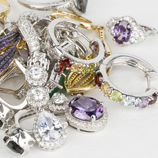Some Things Are Meant to Change…
Last Updated on Tuesday, 26 May 2015 12:17 Written by Albert Greenhut Wednesday, 14 May 2014 07:23
The Atlantic Magazine just posted a page of pictures of World War 1 Technology, find it here. Many of these pictures show old designs that paved the way for the future. For example, the first picture, the acoustic locator, was a predecessor to sonar. The thought of wheeling around a contraption made up of large funnels to listen for faint signs of aircraft noise now seems ridiculous. Many of the other ones I found interesting were about communication, there was a picture of a heliograph (a Morse code communication device), a field telephone that needed to have a large spool of wire uncoiled behind it, and the telegraph room with an incomprehensible series of wires. Many of these are seemingly comically outdated, but it only appears that way with years of hindsight and countless technological advances under humanity’s collective belt. Nearly every picture shows a technology that we have improved upon.
All of the pictures on the page had metal components to the technology they were displaying, but remarkably the technology that is used to protect metals from corrosion and degradation have not markedly changed since WWI. Many companies are still using oils and greases that have been used for nearly a century. Unfortunately, the world has changed; the atmosphere has been filled with more and more pollutants as we have industrialized. This demands more robust protection, but many of those who are most susceptible to this threat are mired in traditional methods of preservation. If the pictures on the WWI Technology Page has shown me anything it is that we must take advantage of new and better technologies or else we would be stagnant in our development, and still carrying around spools of wire to go with our “mobile” phones.
A development that has changed the packaging and preservation landscape was the development of Intercept Technology. Oils and greases do not work in every environment and are constrained by short useful lives, both of which hinder their ability to protect in ways that suit the international trade that has become the norm. Intercept Technology can have a useful life of 20+ years and is used effectively on 7 continents. Despite different demands and different environments one product is effect in its protection. As the world continues to develop should you be using the most up to date products?









